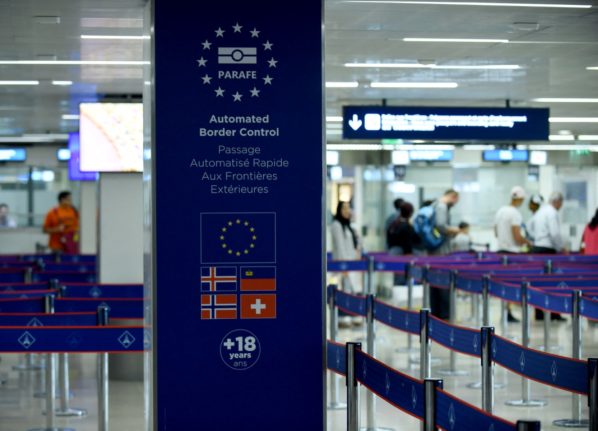Austria has removed almost all of its coronavirus measures and restrictions, at least for the summer months. However, besides steps to protect vulnerable people in settings such as hospitals end elderly homes, there is one important exception: public transport in Vienna.
Mayor Michael Ludwig decided to follow what has been known as the “Viennese way”, as the city has chosen to keep stricter measures than those followed by the federal government on many occasions throughout the Covid-19 pandemic.
READ ALSO: Will Austria drop quarantine and isolation for positive Covid-19 cases?
In Vienna, people need to wear FFP2 masks on public transport, including buses, trams, subways, trains, station buildings, and platforms.
This creates strange situations, with people commuting in from outside town having to wear masks as they get to city limits.
Who needs to wear masks?
Everyone on public transport, all Wiener Linien buildings (including station buildings), on platforms and in vehicles need to wear an FFP2 mask.
The mask requirement is valid even for those who have been vaccinated.
There are, however, some exceptions.
The obligation to wear an FFP2 mask does not apply to pregnant women. Instead, they can use a close-fitting protective cloth covering the mouth and nose (a surgical mask, for example).
Children under the age of six are also exempt from the mask requirement.
READ ALSO: ‘At the limit: Huge spike in Covid hospitalisations and deaths in Austria
Children aged six to 14 need to wear a mask or close-fitting cloth covering their mouth and nose area, but it doesn’t have to be an FFP2 mask.
Other exceptions include persons who cannon wear mouth-nose protection for health or disability-specific reasons. Anyone who is exempt needs to present a medical certificate from a doctor established in Austria or the EEA, according to the Wiener Linien.
Du bist nicht sicher, welche Regeln jetzt gelten? Hier nochmal ein Update: Ab sofort brauchst du in all unseren Fahrzeugen und Stationen eine FFP2-Maske – egal, ob du geimpft bist oder nicht. Wer keine Maske trägt, darf nicht mitfahren und muss 50€ zahlen. pic.twitter.com/bdlELPHrbk
— Wiener Linien (@wienerlinien) September 15, 2021
What happens if people do not wear masks?
People caught not wearing a mask will be contacted and informed of the mask requirement by the security service employees with Wiener Linien.
If they still do not comply, they will be excluded from continuing their journey and ultimately may have to pay a €50 fine for violations of the mask requirement.
Are there many people not wearing masks?
Though there are no official numbers released of the amount of people failing to comply with the mask requirement, it seems that the numbers are growing.
READ ALSO: Will Austria bring back its mask mandate before autumn?
This week, Wiener Linien said it would step up mask patrols on buses, trams, subways and trains to cut down on the number of passengers who have abandoned their FFP2 masks.
“Like you, we are annoyed that some people do not comply with the mask requirement”, the company wrote on its social media.
Uns ärgert es wie euch, dass die Maskenpflicht von einigen nicht eingehalten wird. Deshalb gibt es ab sofort wieder verstärkt Kontrollen in den Öffis gemeinsam mit der @LPDWien, mehr Durchsagen & zusätzliche Infos auf Infoscreens. Gemeinsam kommen wir weiterhin gut ans Ziel! 1/3 pic.twitter.com/7M0OLAimt1
— Wiener Linien (@wienerlinien) July 19, 2022
They added that there were more controls on public transport together with the Viennese police and more announcements and information on info screens.
However, the company also said that they could not control two million passengers “at the same time” and asked people not to pull the emergency buttons in case they saw passengers without masks.
Wiener Linien also reminded passengers that it is “not okay” to take and post pictures of passengers (even if they are not wearing masks).



 Please whitelist us to continue reading.
Please whitelist us to continue reading.
Member comments